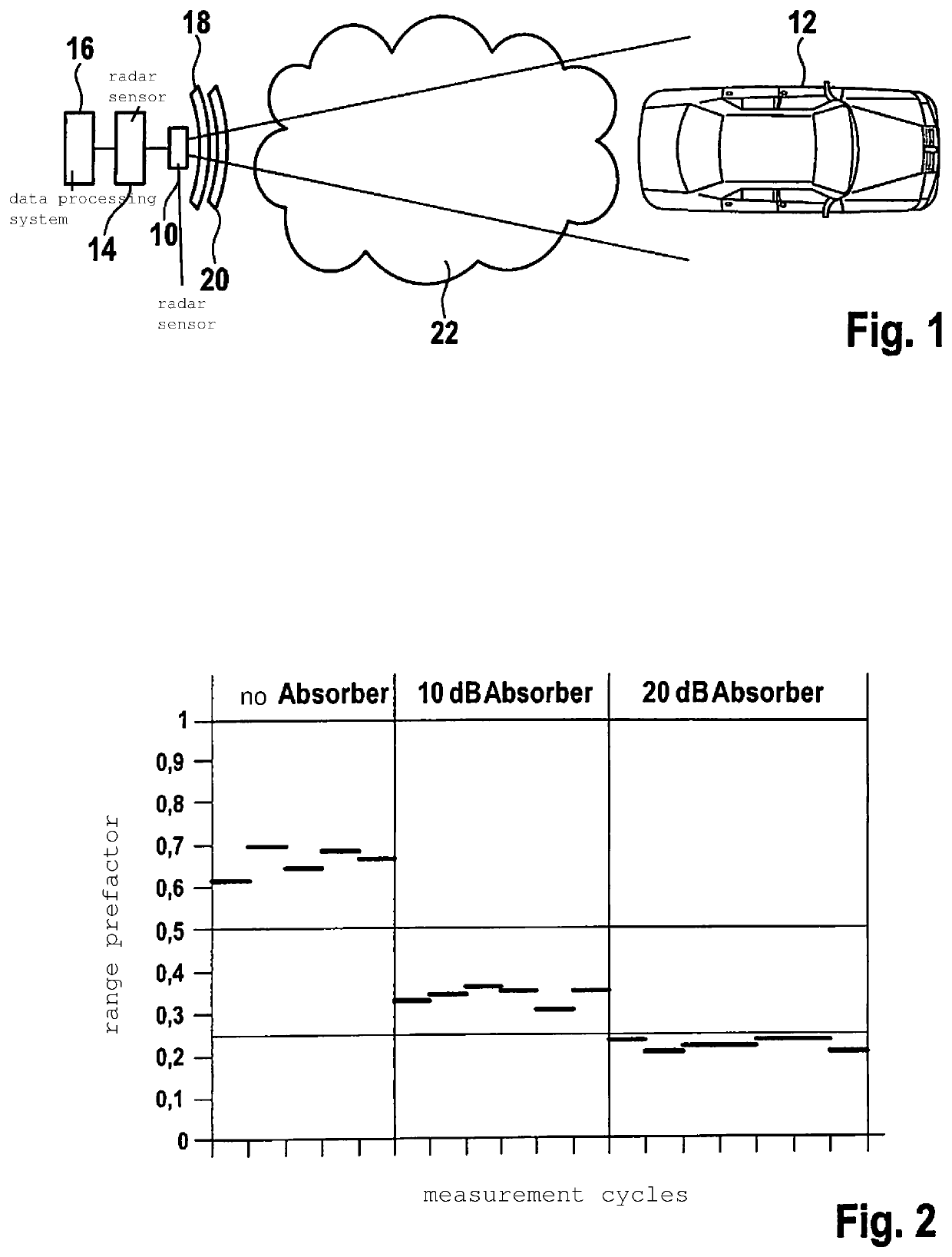Method for blindness recognition in radar sensors for motor vehicles
a radar sensor and motor vehicle technology, applied in the direction of instruments, measurement devices, using reradiation, etc., can solve the problems of blindness of radar sensors, strong attenuation of radar signals, etc., and achieve the effect of reliable quantitative determination
- Summary
- Abstract
- Description
- Claims
- Application Information
AI Technical Summary
Benefits of technology
Problems solved by technology
Method used
Image
Examples
Embodiment Construction
[0029]FIG. 1 shows a radar sensor 10 that is installed in the front part of a motor vehicle (not shown), and that is used to locate objects 12, such as vehicles traveling in front, and to measure their distances, relative speeds, and direction angles. A particular angular resolution capacity of radar sensor 10 also makes it possible to distinguish between broader and narrow objects, so that for example it can also be determined to what class of objects object 12 belongs, for example whether it is a passenger vehicle, a truck, or a two-wheeled vehicle, or possibly also a traffic sign at the edge of the roadway.
[0030]An electronic evaluation and control device 14 is used to control radar sensor 14 and to evaluate the received signals. The data ascertained in this way concerning the surrounding traffic situation are communicated, in digital form, to a data processing system 16 in which various driver assistance functions and / or autonomous vehicle guidance functions are implemented, for...
PUM
 Login to View More
Login to View More Abstract
Description
Claims
Application Information
 Login to View More
Login to View More - R&D
- Intellectual Property
- Life Sciences
- Materials
- Tech Scout
- Unparalleled Data Quality
- Higher Quality Content
- 60% Fewer Hallucinations
Browse by: Latest US Patents, China's latest patents, Technical Efficacy Thesaurus, Application Domain, Technology Topic, Popular Technical Reports.
© 2025 PatSnap. All rights reserved.Legal|Privacy policy|Modern Slavery Act Transparency Statement|Sitemap|About US| Contact US: help@patsnap.com


